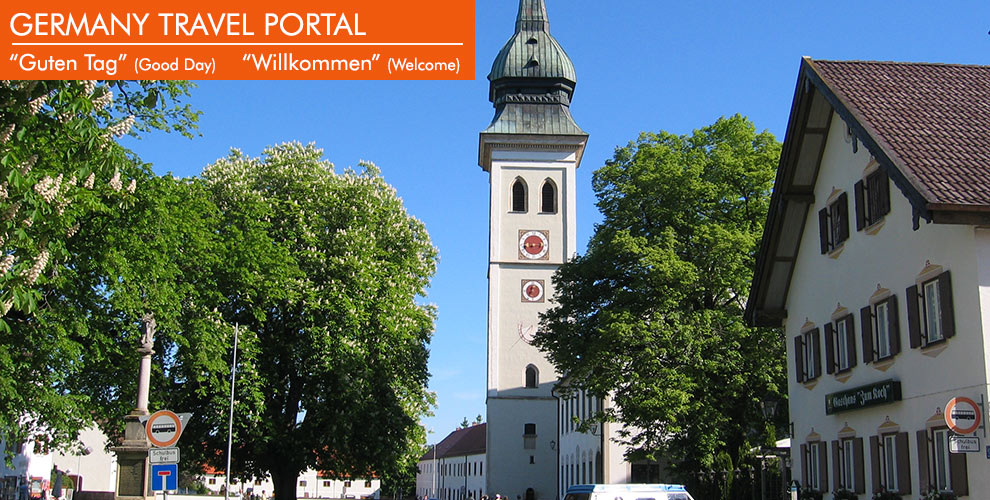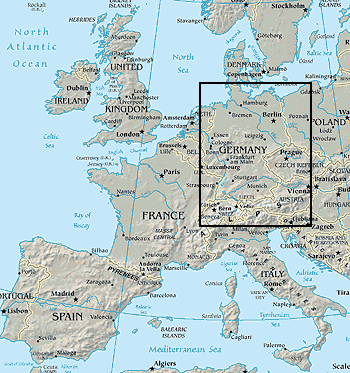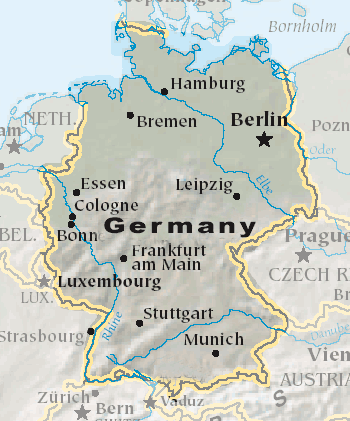


Located in the heart of Europe
Germany is located in Central Europe, bordered by 9 other countries which are Austria, Belgium, Czech Republic, Denmark, France, Luxembourg, Netherlands, Poland, Switzerland.
It’s Europe’s largest economy and most populous nation.
Germany has a modern and advanced transportation system. It’s easy to travel by car, aircraft, and train. Most important airports for international travelers are Frankfurt, Munich, Berlin, but there are others as well. Frankfurt is the major airport hub for Germany.
The country has much to offer to visitors ranging from historal castles and pre-war architecture to metropolitan entertainment, sport activities, cultural institutions, and attractions in general.
Some of the top travel destinations in Germany for foreign visitors are the capital Berlin, Cologne at the Rhine, Munich in Bavaria, Garmisch-Patenkirchen at the foothills of the Alps, Rothenburg ob der Tauber and other towns along the romantic and scenic ‘Romanesque Route’, and the North Sea Islands like Sylt, Föhr, Fehmarn, Rügen (Baltic Sea), and many others.
Wine drinkers will certainly enjoy the 50 miles ‘Germany Wine Route’ in southwest Germany which takes you from Bockenheim over Bad Dürkheim to Schweigen-Rechterbach.
But Germany has more scenic routes to offer: the ‘Romantic Route’ is a 220 miles stretch from Würzburg to Füssen which takes the visitor to places like ‘Castle Neuschwanstein’ of King Ludwig II., and to the Ries Crater in Noerdlingen, where once Apollo astronauts were trained for their moon mission.
Germany is renowned for its rich and tasty food, its vineyards, and its beer brewing tradition.
All Germany Articles: www.travel1000places.com/category/germany/
Quick Links:
Going to Germany: Arrival in Germany, Customs, Entry Requirements
Essentials
Germany Data & Facts
Currency
Euro (EUR)
See also our article: Cash or Credit card for your trip to Germany?
Electricity
220 Volt AC, see more info here: Electricity in Germany — you’ll need a travel adapter for your device plug
Time Zone
CET (UTC+1)
CEST (UTC+2)
Notes: CET means Central European Time. CEST = Central European Summer Time.
DST (Daylight Saving Time)
DST is called “Sommerzeit” in Germany and the time zone changes from CET to CEST, see above. It starts on the LAST SUNDAY in MARCH (@2am) and ends on the LAST SUNDAY in OCTOBER (@3am).
Capital City
Population
ca. 82 millions
Land Area
137 851 sq.mi. (357 021 sq.km)
Highest Mountain
Zugspitze 9,721 ft (2.963 m)
More geographical, political, government, and population information?
More political, economical, geographic data about Germany: Government, Politics, People, and Economy in Germany
National Holiday
Unity Day, October 3rd. Since 1990.
October 3rd, 1990, is the day of the formal completion of the German reunification.
Another milestone in history was November 9th, 1989, when the Eastern German (GDR) government formally announced that East Germans were now allowed to visit West Germany and Berlin. That announcement came after weeks of a revolution-like atmosphere and unrest and instability in East Germany: East Germans were protesting against the regime. Beginning November 10, 1989, East Germans streamed into West Germany and Berlin and enjoyed their new freedom. The Berlin wall physically ‘fell’ and people took pieces as souvenirs.
States
(=administrative divisions) Germany consists of 16 States.
Local name for a state is “Bundesland”.
Baden-Wuerttemberg, Bayern, Berlin, Brandenburg, Bremen, Hamburg, Hessen, Mecklenburg-Vorpommern, Niedersachsen, Nordrhein-Westfalen, Rheinland-Pfalz, Saarland, Sachsen, Sachsen-Anhalt, Schleswig-Holstein, Thueringen

